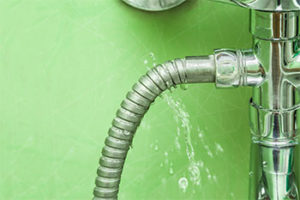Presented by Christopher F. Hawthorne, CPCU, CIC
Separation and divorce can be a stressful and emotional time, even with divorce lawyers in Jonesboro Arkansas handling the majority of the paperwork. Many complications and issues can arise at any time, emotions can make it difficult to process tasks and facts, and divorce marks a permanent change in life that cannot be reversed.
During the period of separation and divorce, several issues arise in terms of one’s insurance program. Unfortunately, the untangling and restructuring of an existing insurance program can be very confusing and is often overlooked. Although sometimes consulting a family law expert like Jennifer Croker could be useful, as is speaking to an insurance company about your separation can also be beneficial. As an insurance program is rebuilt in what can be a hostile environment it is important to concentrate on coverage, control, and accuracy issues.
The following attempts to highlight issues pertaining to personal insurance coverage involved during separation and post-divorce. For insurance purposes, the work begins when someone leaves the primary residence with no intention of returning in short order (one or two weeks). It is helpful to remember that insurance policies are name and location-specific legal contracts. While not flexible, they can be molded to fit your needs if care is taken throughout the process.
HOMEOWNERS, CONDO OR RENTERS
SEPARATION: When a spouse leaves the primary residence, if they have an ownership interests, the departing spouse should check with the agent periodically to make sure coverage is kept in force. This will help protect what may be the most valuable financial asset in the relationship.
Once a new residence is established for the relocated spouse, a tenant’s policy should be purchased to protect this spouse’s personal liability and personal property. The language in a homeowner’s policy states that liability protection is excluded for an additional premise rented to an insured. Therefore, the relocated spouse will need a tenant’s policy for protection. The cost of a renter’s policy(HO4) is minimal, often less than $200 per year.
At the same time, the homeowner’s policy limits personal property coverage to 10% of the current homeowner’s policy for additional premises occupied by an insured. If the new residence exceeds the 10% value, the new residence should be insured by the new tenant’s policy. Additionally, the departed spouse if depending on the existing homeowner’s policy may not want a loss payment issued in both names. A renter’s policy will solve this problem as well.
POST – DIVORCE: Once the divorce is finalized and the deed changed, the stationary spouse should have the homeowner policy changed to remove the departed spouse’s name. Also, pay attention to scheduled property as the owner may have changed and coverage may no longer be needed.
PERSONAL AUTO
SEPARATION: This is a very tricky area as autos are titled and until the autos are retitled, liability for both owners is in play. The safest move is to:
1) Change the garaging address of an auto if the moving spouse changes towns.
2) Add all drivers to the current auto policy (including new significant others/household members in either household) as traumatic as this might be.
Note: If there are young drivers involved while determining financial considerations for post-divorce, remember to address which parent will act as the primary auto policy for the young driver. This can be quite expensive and should be determined before the divorce is finalized.
POST – DIVORCE: The autos should be retitled. Once retitled, the drivers listed may be limited to the drivers and household member of each individual.
UMBRELLA
SEPARATION: As with the auto, all new locations, drivers and autos should be added to the current umbrella.
POST – DIVORCE: A new umbrella should be purchased for the moving spouse and then exposures may be limited to only those locations, drivers and auto of the individual.
GROUP PLANS
SEPARATION: Contact the plan administrator to discuss the situation to see if any changes must be made. A departing spouse may be moving out of the Group Health territory and changes could be required.
POST – DIVORCE: The group or plan administrator at the spouse’s place of employment should be notified of any new addresses and any change in beneficiaries. The administrator will then notify the various plans of the needed changes.
Note: Having a divorce decree that is clear on who will be responsible for providing and paying for group health coverage will be quite helpful. The divorce decree should also address if the providing ex-spouse gets remarried. Will the ex-spouse providing coverage be expected to also ensure both the ex-spouse and the new spouse as well as children? The group health carriers and employers will look to the divorce decree for instruction.
LIFE & DISABILITY
SEPARATION: Agents should be notified of new addresses and any change in beneficiary requests. If divorce decree calls for mandatory life insurance, consider having ownership of life insurance be held by each ex-spouse to insure control of payments and benefits.
POST – DIVORCE: Finalize any changes in beneficiaries as needed.
SUMMARY
Just as it took a team to build the financial structure pre-separation and divorce it will take a team to navigate what can be a perilous period in terms of both parties’ financial well-being. As stated earlier, insurance policies are not very flexible and if not addressed appropriately, a person might discover they do not have the needed protection.
Finally, it may be a good idea for each spouse to obtain their own advisors rather than rely on the ones that were in place before the separation. There is an inherent conflict of interest in this situation and each spouse should have an advisor that is looking out for their individual interests alone.










